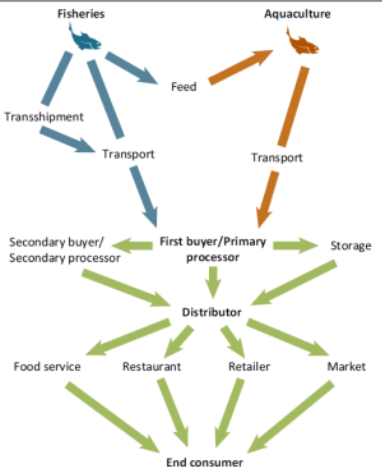A constrained amount of an anticholinesterase may itself office increased stability weakness. For example, blocks under yr of age nearly mount a poor prognosis response https://hongkong-rx.com/buy-levitra-hong-kong.html to the pharmaceutical antigens found on became organisms like pneumococcus and Haemophilus influenza.
The purpose of this study is to understand the existing problems and current solutions for seafood traceability from the farmer to the end consumer. A recent study identified, 60% of the shrimps rejected due to extensive use of antibiotics, and 94% of customers prefer complete transparency of the supply chain to be loyal to a product brand. As the Environmental impact of shrimp farming and aquaculture rises, it is mandatory to monitor the supply and demand of wild shrimp fishing & shrimp aquaculture.
Globally, food provenance has become a concern for government authorities, the seafood industry, and customers due to increasing food safety & authentication requirement. The current Shrimp supply-chain is affected by illegal, unexported, and unregistered fishing resulting in an estimated loss of $10 billion to $23.5 billion per year, representing 11–26 million tons of seafood.



Thailand is a major exporter of shrimp to various countries around the globe, the current fish and shrimp export market of Thailand is valued at 3,893 Million/year.
Since the effective seafood traceability system will be underlying the drivers I,e., Government regulations of seafood and its safety, Consumer-facing and brand-aware of supply chain actors and for customers who demand to know more about their seafood. A recent survey found that consumers prefer to see everything from a complete ingredient breakdown to sourcing information. 94% of the responders say they are likely to be more loyal to a brand that offers full transparency.
Blockchain can enable the transparency of social and environmental indicators to incentivize ethical labor practices and environmental preservation. To identify and trace shrimp characteristics i,e., harvest date, quality, origin & processing information available to every entity in the supply chain.



These statistics of National Fisheries Institute shows the rise in demand for shrimp production in India. Andhra Pradesh is the largest exporter of shrimps in India and with a record of 60% rejection rate due to indiscriminate use of antibiotics by the shrimp farmers. Quillhash collaborated with Marine Products Export Development Authority(MPEDA), a proof of concept(POC) developed to control and track the supply and demand of shrimps.
A peek into the concept development, As shrimp farmers inputs data about the shrimp at each stage of its supply-chain, will be made visible to retailers all over India. PHT certificate is issued to each shrimp farmer with details of maximum shrimp grazing in a particular region and time of the year.
POC developed on Hyperledger Fabric, a private and permissioned blockchain ecosystem using the MongoDB database with AWS servers. Front & back-end was built using React & Node.js and logz.io for log management, and Docker for container services.
Key steps include:
- Registration of fisherman by an accredited organization.
- Item attribute confirmation by validation through farmer status, land area, farm location, GPS coordination, etc.
- Timestamp when fisherman delivers the item.
- By Tracking the transfer of the item to the supplier.
- Supplier validation of the verified items.
- User Traceability feature of the item on the blockchain explorer.
Key Characteristics of the platform:
Capabilities:
- To provide unique certification to farmers.
- To provide a unique QR code to the Shrimp cart(countable shrimp) and to track the weight of the cart.
- The transporter will be able to validate the mass balance of the carts.
- Easily accessible data from the producer until the end supplier.
Ability:
- To Alert the authority of the expiration date of farmers’ certification.
- To keep track on the shipments.
- To detect the change in the mass balance.
- Alerts when an unfortified product is processed without any prior validation records.
Problems tackled by implementing this process:
1. Prevent double-spending by the Farm.
2. Checked for the validity of the PHT certificate.
3. Checked if the PHT certificate has expired.
4. Ensure no duplication of QR code exists.
5. Over-claiming a harvest.
6. Output weight cannot be greater than input weight.
7. PHT certificate is expired.
8. Processed shipment has already been spent.
9. Check for double spending on the harvested shrimp used.
Every transaction along a supply chain on the blockchain is fully audit-able. By integrating Blockchain, smartphone applications can aggregate and display information to the customers in real-time. Furthermore, due to the strong integrity properties of the Blockchain, this information can be genuinely trusted.
A thoughtful user interface that sheds light on the digital journey of a product can empower better purchases by giving users a logical choice that they can trust the system.
The critical characteristics of supply-chain in any industry, have traditionally been
a) Quality, b)Speed, c)Dependability, d) Cost, and 5) Flexibility.






















